CE ratings explained: MCN's guide to understanding motorcycle kit safety standards
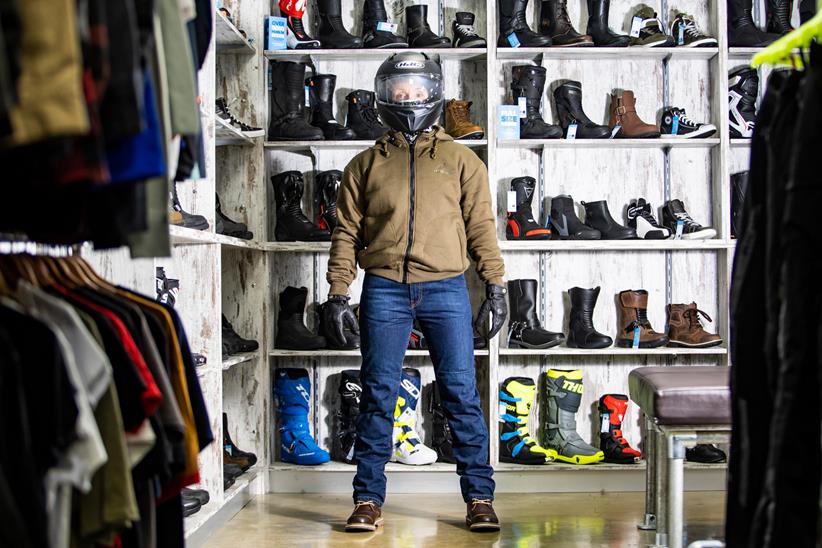
In April 2018, there was a major shakeup in the way motorcycle clothing was rated for its protective abilities with the introduction of CE ratings. That includes all motorcycle clothing, from budget gear for the new rider to premium kit for the long distance tourer or the trackday goer.
The European Union (remember that?) decided that motorcycle clothing should be considered Personal Protective Equipment (PPE) and should be rated in its ability to protect the wearer in the event of a fall, making consumer choice much easier. A new standard was proposed – EN 17092:2020 (an abbreviation of Europäische Norm, or European Norm) that all motorcycle jackets and trousers must comply with.
While the UK is no longer a member of the EU, it was decided that this pan-European standard would be adopted in the UK so that no different testing or assessment process was necessary – particularly handy as many manufacturers are based in Europe and a different standard in the UK to that for Europe could have a variety of potential implications.
The net result was a series of CE (Conformité Européene) ratings for all elements of motorcycle clothing with the exception of motorcycle helmets, which come under a different safety standard.
The new CE rating system applies to motorcycle jackets and trousers, as well as leather suits and there are also CE rating systems in place for boots and gloves. Helmets are still covered by ECE standards in Europe while armour in jackets and trousers also has its own CE rating system.
So, let’s start from the top and work our way down to the feet, explaining what each element is about.
Jump to:
1. Helmets
3. Gloves
3. Boots
Helmets
The latest standard for crash helmets is ECE22.06, which has now replaced the older ECE22.05. As of January 2024, suppliers can no longer sell ECE22.05 helmets.
ECE22.06 comprises a series of tests that each helmet must satisfy. The tests are based on specific impacts to the helmet, including flat and angled impact contact.
While ECE22.06 shows that a helmet has achieved a minimum safety standard required, it doesn’t give any indication of safety performance in comparison to others from various manufacturers. However the British government has developed an in-house safety testing system as part of the Department for Transport. Named SHARP, this tests and rates helmets for relative safety.
It awards an overall rating based on a series of impact tests using both flat and angled (kerb) forms at three different speeds, measuring the actual acceleration forces apparent at the ‘head’ form. It provides a star rating, from one to five, five stars being the best performance and rating and the one to look for.
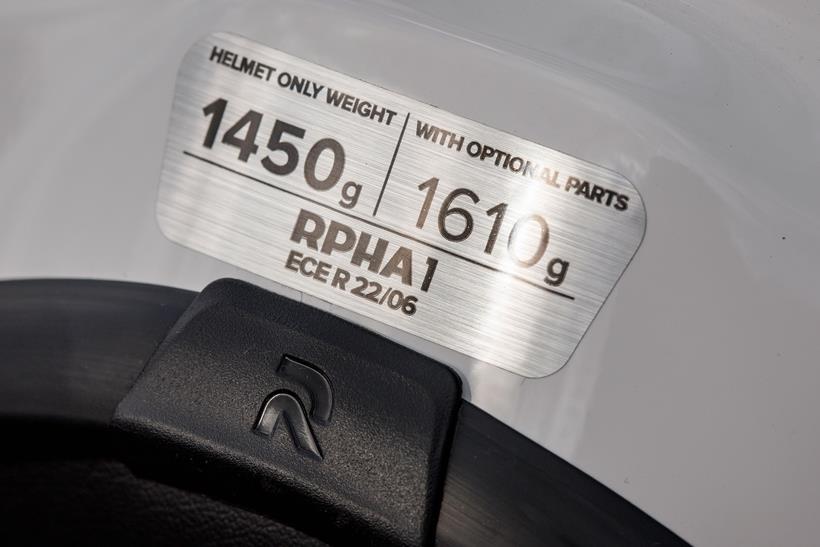
It’s worth noting that not all helmets are tested so if you are looking at a helmet and it isn’t rated by SHARP, that doesn’t necessarily mean it doesn’t perform well. Although if you are choosing between two or more helmets that are SHARP rated, we would always suggest the one with the higher SHARP rating, assuming a proper fit and good comfort.
The new standard – ECE22.06 – was introduced in 2021. It states that all helmets need to satisfy stricter safety requirements. This effectively builds on the previous standard and adds a variety of changes, including increased velocity for some tests, a random selection of impact areas, assessment of sun visors and testing flip-front helmets with the chin bar raised as well as closed. It also adds a requirement for protection against rotational injuries, which are a significant contributor to brain injuries in addition to direct impacts, according to research.
You can still wear a helmet that is certified to the older ECE22.05 if you want, but bear in mind manufacturers do recommend changing your lid five years after it is manufactured, as the EPS liner starts to break down after that period of time, leaving your head less protected.
All helmets must meet the ECE22.06 standard, so whether you are looking for a budget helmet or an all singing all dancing sports-touring lid, you know your head is protected.
HJC C10
Best budget helmet


"If you’ve got no more than £100 to spend on a helmet, you won’t be disappointed with the HJC C10. Although it doesn’t have many bells and whistles, as a basic helmet its performance is impressive. It’s good quality, very quiet and looks classy. It definitely doesn’t feel – or look – like a cheaper lid. It’s also available in youth sizes which make it a really good option for a first lid."
Read Emma's full HJC C10 review
Pros
- Brilliant value
- Very quiet
- Comfortable
- Good ventilation
Cons
- Nit picking here, but visor is a little stiff to open
| Weight | 1550g (measured) |
| Construction | Polycarbonate |
| Chin strap | Ratchet |
| Intercom ready? | Yes |
| Drop down sun visor? | No |
| Pinlock | Sold seperately |
| Interior | Moisture wicking, removable/washable |
| Shell sizes | Four |
| Warranty | Three years |
| Safety standard | ECE 22.06 |
- Wide visor opening
- HJ-34P Anti-fog Pinlock ready visor
- Advanced channelling ventilation system
Best everyday helmet
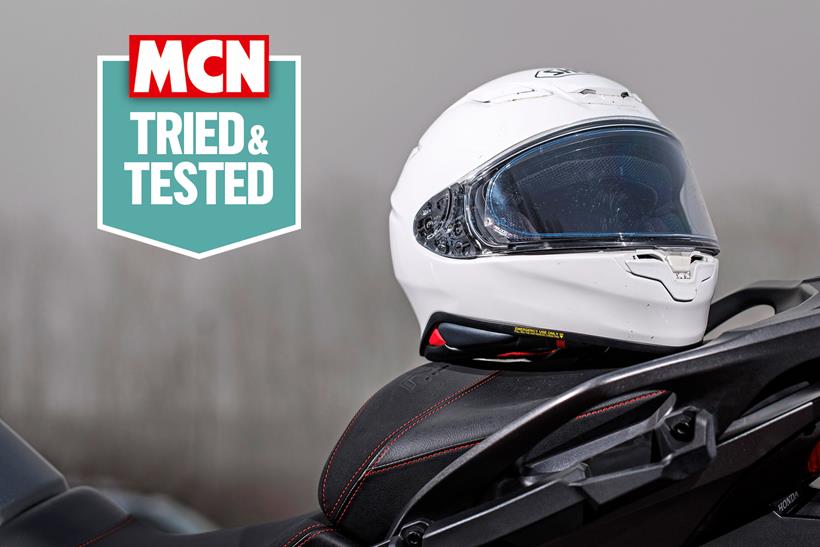

"l think it's a great look, somehow managing to tread the fine line between subtle and stylish, with an aerodynamic twist thanks to the spoiler. But as well as the looks, it's the aeros that make this among the quietest helmets l've worn when travelling at speed. It's versatile in terms of venting too, which has been great for me because I've ridden in all manner of conditions, from frosty drizzle to 40-degree-plus heat.
"There are a lot of sizing options, including five outer shell sizes and cheek pads in four thicknesses, which means it's worth getting the helmet fitted properly at a shop rather than buying blind online The strap is secured using a double D-ring and, while l've tried other systems, nothing offers the same simplicity.
"Should the worst happen, there's an Emergency Quick Release System that allows the lid to be removed. Sure, it's not a cheap lid, but if this design is too expensive, there are simpler solid colours on offer starting at a hundred quid less And to top it all off, the Shoei comes with a five-year warranty for additional peace of mind."
Some designs are still 45% off at Sportsbike Shop, making them £289.99 instead of £539.99!
Pros
- Stylish design that balances subtlety and aerodynamics with a spoiler for a quiet ride at high speeds
- Excellent ventilation adaptable to various weather conditions from cold drizzle to extreme heat
- High-quality construction with solid materials that enhance the operational feel of vents and visor
- Available in simpler, less expensive colour options
Cons
- High cost, though justified by the quality and features offered
| Weight | 1470g |
| Construction | Muti-composite shell |
| Chin strap type | Double D-ring |
| Intercom ready? | Yes - Shoei Sena SRL-EXT Bluetooth Communication System |
| Drop down sun visor? | No |
| Pinlock? | Yes |
| Interior | Moisture absorbing Quick-Dry interior for added comfort |
| Shell sizes | XS-XXXL |
| Warranty | Five years |
| Sharp score | 5/5 |
- Emergency quick release cheek pads
- Washable cheek pads, liner and strap cover
- Ventilation system
Jackets and trousers
Jackets and trousers, whether that’s textile trousers or riding jeans, are tested and given a CE rating that comprises a letter or combination of letters. In its simplest form, the ratings are, from least protective to most protective:
• C only has protective properties in areas that have protectors
• B only offers protection for abrasion resistance
• A Provide protection for impacts and abrasion to a lesser level than AA
• AA Provide protection for impacts and abrasion to a lesser level than AAA
• AAA Provides the highest level of protection for both abrasion resistance and impact
If you take nothing more from this story, then look for the highest number of ‘A’s in the CE rating when looking for jackets and trousers. It’s always best to buy the most protective gear that you can afford. In addition to seeing the ratings explained in adverts and any promotional material, you will also find a CE label confirming the rating within each garment as well.
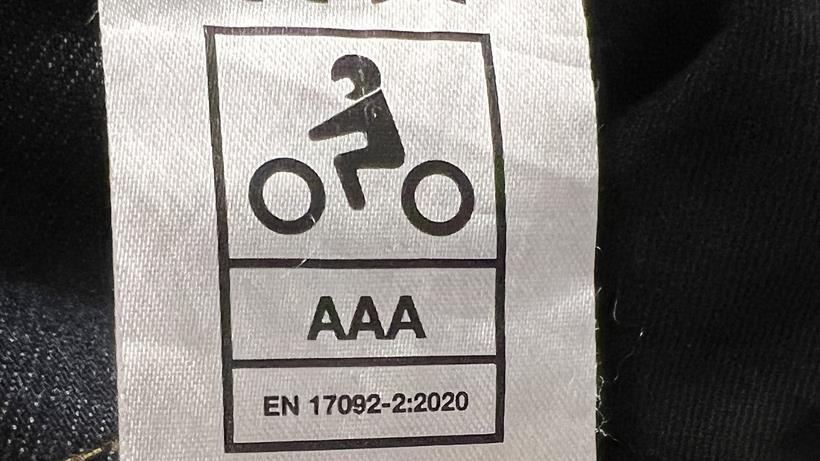
If you are looking at garments in the flesh – such as at an event or a show – then you may need to go underneath a thermal liner to find the CE label. It must be there – if it isn’t, then walk away.
The ratings are determined from a series of tests and assessments. One is impact abrasion resistance which is a measure of how well the garment will protect you if you are sliding down the road surface. Sample garments have sections of their material held in a test rig and abrasive tools passed over them to simulate sliding on a road to assess their resistance.
Another rated area is seam strength and that of zips and fasteners while the tear strength is also tested in several directions across the material to assess its strength under the action of a fall from the bike. The strength of joining methods for two-piece sets is also tested, as is sleeve rigidity and restraint and fit and stability under washing are also rated.
The armour fitted to jackets and trousers is also rated against EN Standards; EN 1621-1:2012 is for shoulder, elbow, hip and knee armour and EN 1621-2:2014 is for back protectors. There are only two performance levels: Level-1 and Level-2. Again, at its most basic level, Level-2 is more impact-absorbent than Level-1.
Generally, garments will come with armour installed though it is not uncommon for jackets to have just a pocket for an optional back protector. But any garment that is AA- or AAA-rated should come with armour already at the shoulders, elbows, knees and hips as a requirement for that certification though it could be either Level 1 or Level 2 – there is no specified level here.
The armour itself will be marked with a series of symbols, including its intended location and the level of protection – it’s the latter that is most important when you are buying the kit.
Just like the garments, if you are in any way concerned, then remove one of the pieces of armour and check the markings – if there are none, then walk away – it isn’t CE approved and there are no guarantees as to how protective it is.
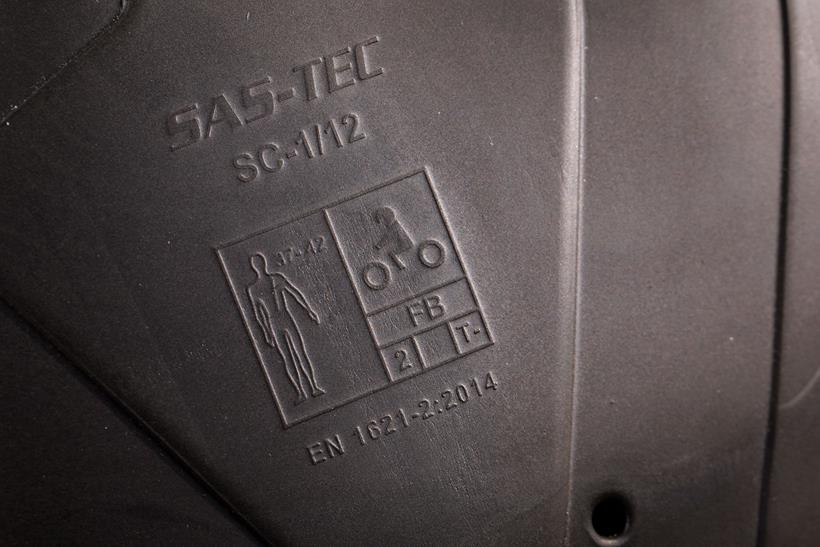
One thing to bear in mind is that generally – though not exclusively – speaking, the higher the protection offered by a garment, the stiffer and less flexible it will be.
However, that isn’t necessarily always the case and is one reason why, if you can, you should try any items of motorcycle gear before you buy for fit and comfort as well as that flexibility.
Our favourite textile jacket
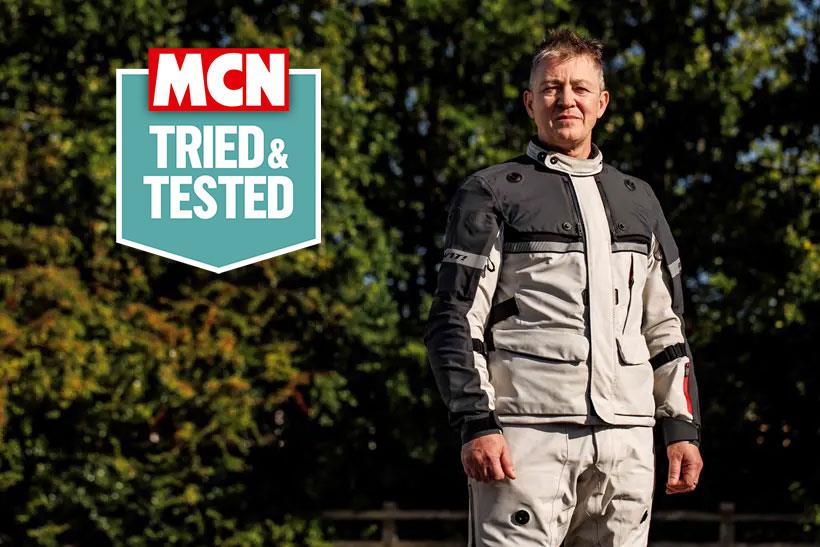

"Thanks to numerous adjustment points, the Poseidon 3 GTX jacket is an excellent fit. Forearm straps help snug the elbow armour in place, and ‘v’ belts at either side around the middle do the same for the back and chest protectors"
"Ventilation is superb, with generous Velcro and zip secured panels on the chest, a vent on each upper arm and two large exhausts running vertical down the back. The chest flaps are secured by magnetic FidLock catches when open, which makes it really easy to flip them into position with just one hand – the same goes for the similar panels on the thighs. With everything open, both garments allow a massive amount of air to flow through, guided and assisted around the body by the mesh lining."
"Life with the REV’IT! Poseidon 3 GTX suit has been a fuss free experience, and the jacket and trousers will likely remain my first choice textiles for some time. Climate control is very good, thanks to the removable thermal liner and breathable membrane, and it excels for ventilation and waterproofing – arguably the two most important factors for adventure ready comfort. Protection as supplied is as good as it gets, but the lack of chest and back protectors as standard is a bit of an issue, as is the decision not to include braces – I’d gladly pay an extra £100 for the convenience of having those options in one package."
Find the matching trousers here
Read Justin's full Rev'it Poseidon review
Pros
- Properly waterproof
- Durable and hardwearing
- Good ventilation
- Plenty warm enough in the cold
- Fits well with good adjustability
Cons
- Back and chest protection extra
| Construction | 2L nylon 400D Gore-Tex fabric and 3L nylon 200D Gore-Tex fabric textile |
| CE Rating | AA |
| Armour | Level 2 elbow and shoulder |
| Type | Touring |
- Removable thermal liner
- Aquadefence panels on chest
- Adjustable hem, lower arms, and cuffs for improved fit
- Inner Napoleon pocket, inner pocket with thermal liner, sleeve pocket and slit pocket at chest
- Two waterproof stash pockets at waist
- Detachable storm collar
- Long and short connection zip for attachment of Rev'it trousers
Our favourite leather jacket


"Made from full-grain leather and featuring a sporty cut with Level-1 internal protectors as well as external shoulder armour, the S-1 meets the highest AAA rating for abrasion protection.
Extremely solidly built, the quality of the S-1 is impressive. It feels like a proper protective garment thanks to the way it's been stitched and also the inclusion of double-layered leather at key impact areas, such as the elbows. The only slight disappointment is the absence of a back protector element although you can add a Level-2 insert for an extra £29.99 if you so wish.
With abrasion-resistant four-way stretch panels under the arms and concertinaed leather at the flanks combined with Velcro waist adjusters, this jacket allows plenty of movement and as a result doesn't feel restrictive. It's been designed to be worn with jeans meaning that it finishes just over the hips, and also features a neoprene-mounted full-circumference connection zip. Inside, there's a zip-out thermal gilet which is fairly thin but does just enough to keep off the early morning chill from the smattering of ventilation holes on the chest area. The S-1 is lined with a mesh fabric which helps with comfort on very warm days."
Pair with RST S-1 CE Sport trousers to make a suit.
Pros
- AAA rated protection
- Sports styling
- Great price
Cons
- Needs a bit of breaking in
- Back protector not included
| Construction | Hard-wearing leather and 4 way stretch material |
| CE Garment Rating | AAA |
| Armour | Shoulder and elbow |
- Fixed quick dry mesh lining
- Removable thermal liner
- Pocket for optional back protector
- Perforated leather for airflow
- Available as a two piece suit as part of the S-1 Range
Gloves
As one of the first things that are likely to hit the deck if you fall off, particularly at low speed, are the hands, then protection here is crucial. Motorcycle gloves are rated to EN 13594:2015 and a bit like armour, are rated as either a basic pass (1) or a superior pass (2) while knuckle armour is also rated – KP indicates it has been tested and passed the test.
In real terms, you may see gloves that are CE-rated 1 or 1 KP but anything that is CE-rated 2 will always be 2 KP – the knuckle protection test is optional for Level-1 gloves and mandatory for anything going for Level-2 certification.
The assessment process tests the gloves in several areas; one is the cuff length, with Level-1 requiring only 15mm and Level-2 needing at least 50mm, so sporty gloves will generally perform better in this area. The second is restraint, where a force is applied to try to pull the glove off a ‘wrist’ with the fastenings done up. A 2 ranking indicates a higher force necessary to remove the glove while the tear strength is also checked, in several areas and orientations.
Seam strength is also assessed, to ensure that the gloves don’t come apart in an incident while impact abrasion resistance – perhaps the most important element – is also checked similarly to jacket and trousers’ material.
The results of these tests will generate a rating of either 1 or 2 for the glove overall. Alongside this, the knuckle protection can be rated and for a Level-2 glove, it must transmit less force from a standard test impact internally than for a Level-1 glove.
Our favourite sporty gloves
"These Oxford Nexus 1.0 gloves are a pretty perfect balance - thin in the right areas, and sturdy in others, at a price where rivals are offering lowlier Level 1 protection. A waterproof membrane would open them up to an extended riding season, while those of you with hotter hands might want more ventilation on the warmest days of the year. Otherwise I don’t have a bad word to say about them."
Pros
- CE Level 2 protection
- Comfortable
- Great value for money
Cons
- Not weatherproof
| Construction | 100% Aniline leather |
| Type | Sports |
| CE rating | Level 2 KP |
| Armour | TPU Knuckle protection |
- Aramid reinforcement
- Touchscreen compatible
Our favourite winter gloves
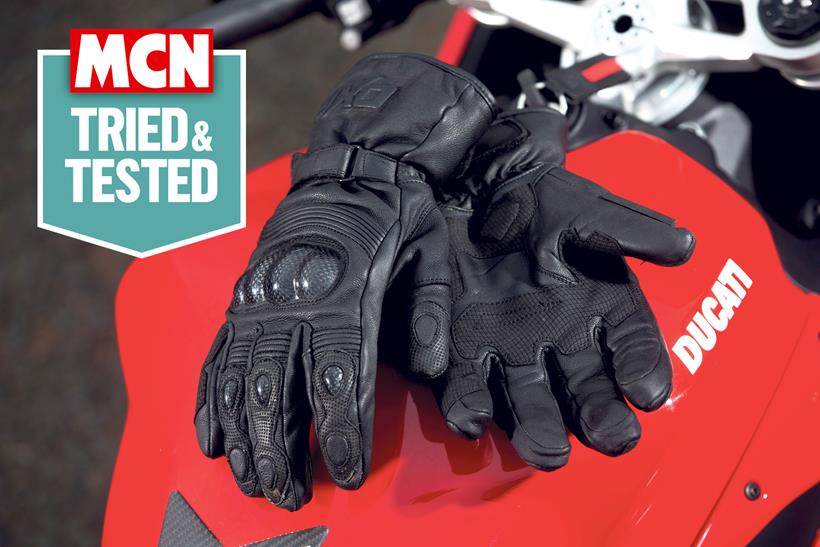

"These are keenly-priced, at under £50, and are ideal for cooler rides. With a leather outer, they have a Thinsulate thermal liner and a membrane, that's both waterproof and breathable."
"I've ridden in cold and damp conditions and they've been comfortable and kept my hands dry. And, unlike some winter gloves, they are not too bulky."
"They are approved to CE Level 1 and have hard knuckle and finger armour, plus extra protection on the palm. I'm a cuff-over-sleeve kind of girl and I do have a couple of criticisms - the cuff is slightly too short, leaving a small draught around the wrist; my other slight moan is that I'd prefer the left thumb visor wipe to be on the forefinger."
Pros
- They are genuinely waterproof
- They are not too bulky
Cons
- the cuff could do with being a little longer
| Construction | Calfskin leather and thinsulate |
| Type | Winter / waterproof |
| CE Rating | Level 1 |
| Armour | Fingers and knuckles |
- Internal waterproof and breathable membrane
- Carbon fibre knuckle ad finger protection
- Integrated visor wipe
Boots
Like gloves, motorcycle boots are tested against an EN standard and given ratings to display their protective abilities. However, unlike gloves, there are two possible test standards and the results are presented as individual test scores, rather than a single, overall result.
The two standards are EN 13634:2015 and EN 13634:2017. Each gives a score for the boots in several areas, with a 1 (basic pass) or a 2 (superior pass) in each of those areas, like gloves overall. The areas are broadly the same across both standards, though there are three for the 2015 standard and four for the 2017 version.
For the 2017 standard, the first digit indicates the height of the boots – 1 is a short or ankle-height boot and 2 is a full or shin-height example – but this is absent from the 2015 standard. After the first digit in the 2017 rating, both are then the same and show a rating for abrasion resistance, impact cut and transverse rigidity.
Again, by this point, we are fairly familiar with abrasion resistance – it is how well two areas of the boot stand up to sliding along the road.
Impact cut shows how well the boots resist cutting by a sharp object and is tested by the amount a falling blade penetrates the material while transverse rigidity shows how well the boot will prevent your foot from being crushed if the bike falls on it and is tested by applying force to the side of the boot and measuring how is compresses.

The results are presented as a series of numbers. The least protective would be 1-1-1-1, indicating a short boot with basic protection while the best is 2-2-2-2.
However, in addition to these ratings, you may also see other markings as part of the CE label though these indicate additional features, such as IPA or IPS demonstrating Impact Protection to the Ankle or Shin; WP shows water resistance ie a waterproof boot and several other markings show the resistance of the sole to fuel and oil and also, slippage.
Our favourite sporty boots


"When I bought these boots I was replacing a pair of Dainese boots that I had unfortunately ruined in an accident. I had broken my ankle but it could have been so much worse, so I set out to get a pair of sports type boots with lots of rigid protection. These Alpinestars Stella boots caught my eye thanks to the shin guard, ankle bracing and the reinforced sole section. "
"They were comfortable from the first wear so there was no need for me to spend hours walking around my home to break them in. A side entry zip with velcro fastening makes them really easy to put on and the accordion flex sections make them fairly comfortable to walk in for this type of boot. The waterproofing has proven to be effective in the rain showers that I have found myself caught in, the only problem being that due to the wide calf and shin area, I can't easily fit trouser legs over the boots, so in heavy rain, it would run into the boots unless wearing wide leg trousers. "
"My only small negative with these boots is that as with most rigid sportsbike style boots, they are a bit squeaky when walking but a little silicone spray should sort that out. "
Pros
- Top quality brand
- Comfortable from the first wear
- They are actually waterproof
Cons
- They are a bit squeaky
| Armour | Ankle, Toe Sliders, Shin |
| Type | Road and race |
| Construction | Microfibre upper and Drystar membrane |
| CE rating | 2 -2 - 2 |
- TPU lateral ankle brace support between calf, shin and ankle for impact shock protection
- TPU injected shin guard, calf protector, heel counter, shift pad, ankle brace and toe sliders
- Double density ankle protector on the medial side
- Replaceable toe slider with easy screw fixings
- Instep and Achilles accordion flex zone
- Internal toe box protection
- Removable anatomic footbed with EVA and Lycra
Our favourite touring boots
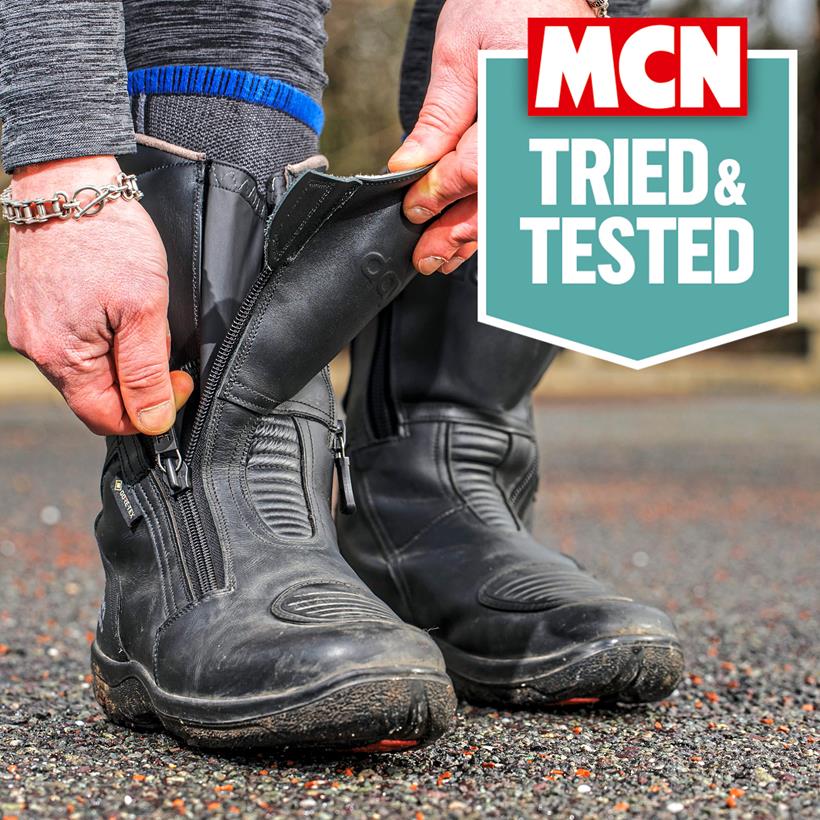

"A decent pair of winter boots can be worth their weight in gold, but when I first saw the price of the Daytona Road Star Pro GTXs I was sceptical as to how they could ever justify such a high price. Four months on, and after enduring one of the wettest winters on record, they have seriously impressed, keeping me dry, comfortable and secure.
"Daytona boots are handmade in Germany to a seriously high standard. The upper is kind of a boot within a boot, featuring a fixed inner that surrounds the ankle and lower leg.
"Protection is to the highest CE standard of 2-2-2 for abrasion resistance, impact cut and transverse rigidity, and the large shin pad features substantial foam armour. The Road Star boots certainly give peace of mind from a safety aspect, yet they aren’t overly rigid and remain flexible enough where it counts to be comfortable all day.
"And the more I wear them, the more supple they get. Yes, they are one of the most expensive boots on the market, but virtually every part can be replaced by the manufacturer, which pretty much makes the Daytonas a boot for life. If you can afford the outlay, I reckon they’re worth every penny."
Pros
- Incredibly high quality - a true boot for life
- Comfort is superb, and only improves over time
- Highly repairable by the manufacturer
Cons
- One of the most expensive boots on the market
- Zip can be a bit stiff to use
| Construction | Hydrophobic cowhide |
| Type | Touring |
| CE Rating | 2-2-2-2, WR, IPA, IPS |
| Armour | Heel, ankle, shin |
- Completely handmade in Germany
- PU foam sole
- Anatomically formed climatic insole
- Watertight & Breathable with GORE-TEX climatic membrane
- Petrol and oil resistant sole
- 3M-Scotchlite heel reflectors
- Two zip fasteners for ease of access
- Reinforced gear change cushion made from abrasion resistant PU foam
- Plastic ankle protection, both sides, padded inside with open-cell special foam
- Wide shinbone protection, padded with latex foam inside
- Plastic reinforced inner sole with a hot-dip galvanised steel inlay
How we test motorcycle kit
At MCN, our team of expert journalists have decades of experience gained over hundreds of thousands of miles. We don’t usually test our motorcycle gear to destruction; we use it exactly how you do, in the real world and in all conditions, while also being on top of the key safety regulations. That means we can deliver impartial buying advice you can rely on.
Each of our writers has an in-depth understanding of the needs of today’s biker… because they are one, and regularly test and review summer kit.
To find out if a product is worth spending your money on, our testers use them in the way you will. That means riding in them in whichever conditions they are designed for, which in this case means warm weather.
We test against various criteria such as the weight of the products, its venting, what armour is included, and of course, which safety ratings they adhere to.
This allows us to give a full overview of which areas each product performs well in. We asses how the products fit; are they true to size, and they comfortable to wear while riding but also off the bike too? Do the products feel like the level of quality matches up to the price, or does it exceed in this area?
If you can’t see a review against an item on this page, it’s because we haven’t tested it yet. These items will only be included if we think they’re important and relevant in the market, and rest assured, we will be working on bringing you a review as soon as we’ve done the miles.
To find out more, head to our dedicated page explaining how we test motorcycle products.
What our star ratings mean
When we review a product, we award it a score out of five. In the ratings tab of a given product, you may also find more specific scores for the different aspects of a product’s performance to help you make an informed decision. Here’s a guide to what each number score means:
- 1 star – Poor performance in this category or overall. A product with a single star rating has fallen below the expected standard and should be avoided.
- 2 stars – Basic performance in this area or overall. A product with a two-star rating has managed to perform to a barely acceptable level and there is room for improvement.
- 3 stars – An average performance in this area or overall. A product with a three-star rating has achieved a basic level of performance and is deemed adequate.
- 4 stars – A product has performed over and above the accepted averaged in this category or overall. A product with a four-star rating has surpassed expectation and delivered in a particularly impressive way.
- 5 stars – A product has performed at the highest possible level in a particular category or overall. A product with a five-star rating has delivered to the highest possible level, impressing the tester with its performance. We would happily spend our own money on it.
- Just so you know, we may receive a commission or other compensation from the links on this website - read why you should trust us.






